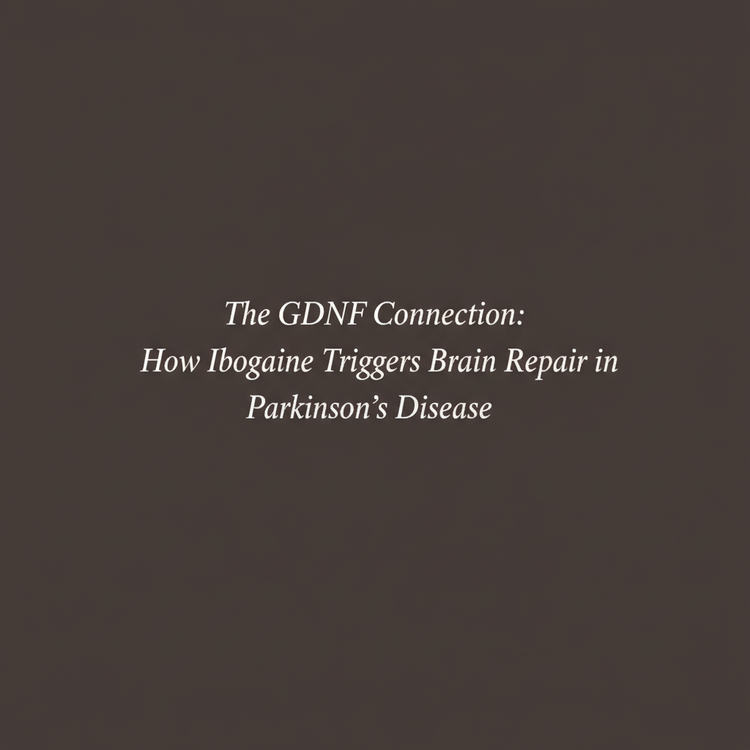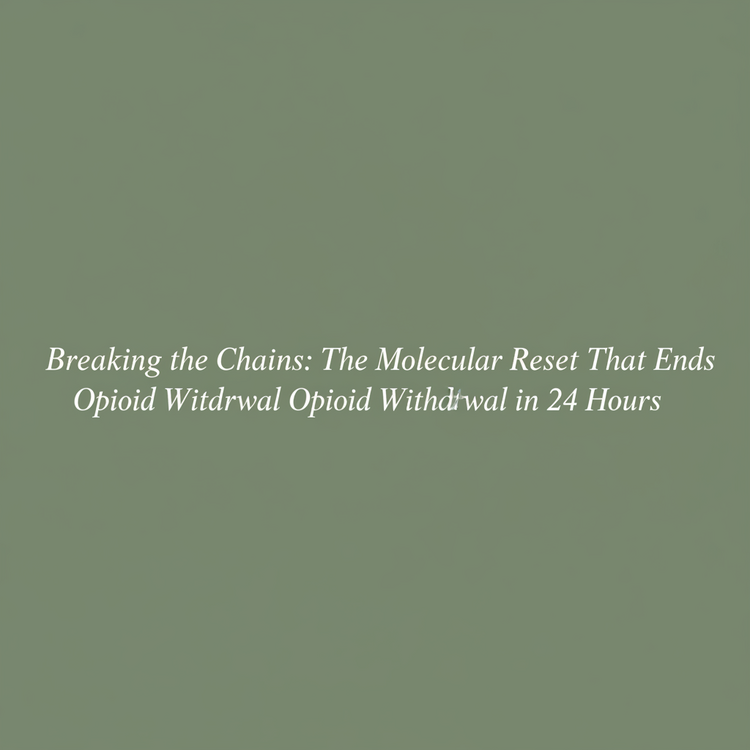The GDNF Connection: How Ibogaine Triggers Brain Repair in Parkinson’s Disease

When legendary quarterback Brett Favre recently discussed his journey with ibogaine for concussion-related symptoms, it brought a powerful new conversation into the open. For millions, however, the focus is on another neurodegenerative condition that medicine has long deemed irreversible: Parkinson’s disease. The conventional wisdom has offered only symptom management, a slow, managed decline as the brain’s dopamine-producing neurons wither away. But what if the brain itself holds the key to its own repair?
A groundbreaking body of research is revealing that ibogaine, a psychoactive compound from the African shrub Tabernanthe iboga, may do more than just mask symptoms. It appears to trigger the release of a powerful protein that protects, revives, and even helps regenerate the very neural circuits destroyed by Parkinson’s. This isn’t just another treatment—it’s a potential paradigm shift, a move from managing degeneration to actively promoting regeneration.
The Parkinson’s Crisis: An Unmet Need
Neurodegenerative diseases affect more than 55 million people worldwide, and Parkinson’s is the second most common after Alzheimer’s. In the United States alone, over one million people live with the condition, a number projected to increase dramatically in the coming decades. For these individuals and their families, the journey is one of incremental loss—of motor control, of cognitive function, and of hope.
Current treatments, like Levodopa, are essential but flawed. They work by temporarily increasing dopamine levels, but they do nothing to stop the underlying death of neurons. Over time, their effectiveness wanes, and they can cause debilitating side effects like dyskinesia (involuntary movements). This therapeutic ceiling leaves patients in a desperate search for alternatives that can offer more than a temporary reprieve. They are searching for something that can halt, or even reverse, the damage.
The GDNF Discovery: Activating the Brain’s Own Paramedic
The breakthrough lies in a naturally occurring protein called GDNF (Glial Cell Line-Derived Neurotrophic Factor). Think of GDNF as the brain’s own paramedic and construction crew rolled into one. Its primary job is to protect and restore dopamine-producing neurons—the exact cells that Parkinson’s disease relentlessly attacks. For years, scientists have known that if they could increase GDNF levels in the right brain regions, they could potentially slow or stop the disease.
The challenge was delivery. Early attempts involving direct brain infusions or gene therapy were highly invasive, expensive, and produced inconsistent results. The brain needed a way to be stimulated to produce its own GDNF. This is where ibogaine changes the entire equation.
Landmark preclinical research has shown that a single administration of ibogaine can cross the blood-brain barrier and trigger a massive, targeted release of this neuroprotective protein. A study published in Frontiers in Pharmacology found that ibogaine produced a 12-fold increase in GDNF in the Ventral Tegmental Area (VTA) and a 6-fold increase in the Substantia Nigra—the precise areas devastated by Parkinson’s. This discovery provides a non-invasive, systemic way to switch on the brain’s innate repair mechanisms.
From the Lab to the Clinic: Real-World Results
This remarkable science is now translating into life-changing clinical outcomes. In early 2024, Ambio Life Sciences launched one of the world’s first clinical programs using ibogaine for neuroregeneration. In a cohort of 30 patients with Parkinson’s, the results were astonishing. After a 14-day treatment program, patients experienced an average 70% reduction in symptom severity.
The response was not only profound but also rapid. Many patients reported a greater than 50% reduction in symptoms within just three to four days. These were not minor tweaks but substantial gains in quality of life, including:
- Improved mobility, balance, and gait
- Reduction in tremors and rigidity
- Enhanced eyesight and cognitive clarity
- Relief from neuropathic pain
- Better sleep and mood regulation
A key part of this sustained success is noribogaine, ibogaine’s primary active metabolite. While the intense psychoactive experience of ibogaine lasts for hours, noribogaine can remain in the body for up to several months, continuing to promote GDNF production and neuroplasticity long after the initial treatment. This creates a prolonged window for healing and rehabilitation, with some patients maintaining their gains for months on a maintenance microdosing protocol.
More Than One Mechanism: Ibogaine’s Multi-System Approach
Ibogaine’s power doesn’t come from a single silver bullet but from its ability to orchestrate a symphony of healing across multiple neural systems. While many pharmaceuticals target a single receptor, ibogaine is a polypharmacological agent, meaning it works through several complementary mechanisms at once:
- Neurotrophic Factor Upregulation: As discussed, it powerfully stimulates GDNF and BDNF, providing the raw materials for neuronal repair.
- Dopamine System Modulation: It directly influences the dopamine transporter (DAT), increasing the availability of dopamine to provide immediate symptomatic relief while long-term repairs are underway.
- Neuroplasticity Enhancement: By acting on NMDA receptors, it helps the brain “reset” dysfunctional circuits and form new, healthy pathways around damaged areas.
- Anti-Inflammatory Action: It reduces the chronic neuroinflammation that is known to accelerate the progression of Parkinson’s, creating a healthier environment for neurons to survive and thrive.
This comprehensive approach helps explain why ibogaine may succeed where single-mechanism drugs have fallen short. It doesn’t just put a patch on one problem; it addresses the disease from multiple angles simultaneously.
What This Means for the Future of Parkinson’s Treatment
For the millions living with Parkinson’s, this research represents more than just scientific curiosity—it represents a tangible source of hope. While it is not yet a cure, ibogaine offers the first real possibility of neuroregeneration, not just slowing degeneration. The goal is shifting from managing an inevitable decline to actively reclaiming lost function.
The field is moving quickly. A pharmaceutical-grade version, CKBR-12, is entering clinical trials in Mexico, and research partnerships with institutions like Dalhousie University are underway to further refine protocols and expand access. This is the dawn of a new era in neurological medicine, one where we work with the body’s own intelligence to reverse what was once thought irreversible.
For those seeking to halt the progression of neurological decline and explore the potential for genuine repair, the science behind ibogaine offers a new path forward. Contact Iboga Wellness Institute at 800-604-7294 to begin a confidential conversation with our medical team. We can help you understand our neuroregenerative protocols, answer your questions about safety and efficacy, and determine if you are a candidate for this breakthrough treatment.
You can also download our Clinical Summary of Ibogaine Therapy for comprehensive information about its mechanisms, our industry-leading safety standards, and the evidence-based outcomes we facilitate.
Key Takeaways
- Ibogaine has been shown to dramatically increase GDNF—a key protein for dopamine neuron survival—by up to 12-fold in the precise brain regions damaged by Parkinson’s.
- Early clinical programs report an average 70% reduction in Parkinson’s symptom severity, with significant improvements in mobility, tremor, and mood occurring within days.
- Ibogaine works through multiple mechanisms, including boosting repair proteins, modulating dopamine, enhancing neuroplasticity, and reducing inflammation.
- This represents a paradigm shift from merely managing symptoms to actively promoting neurological repair and regeneration for conditions previously considered irreversible.







